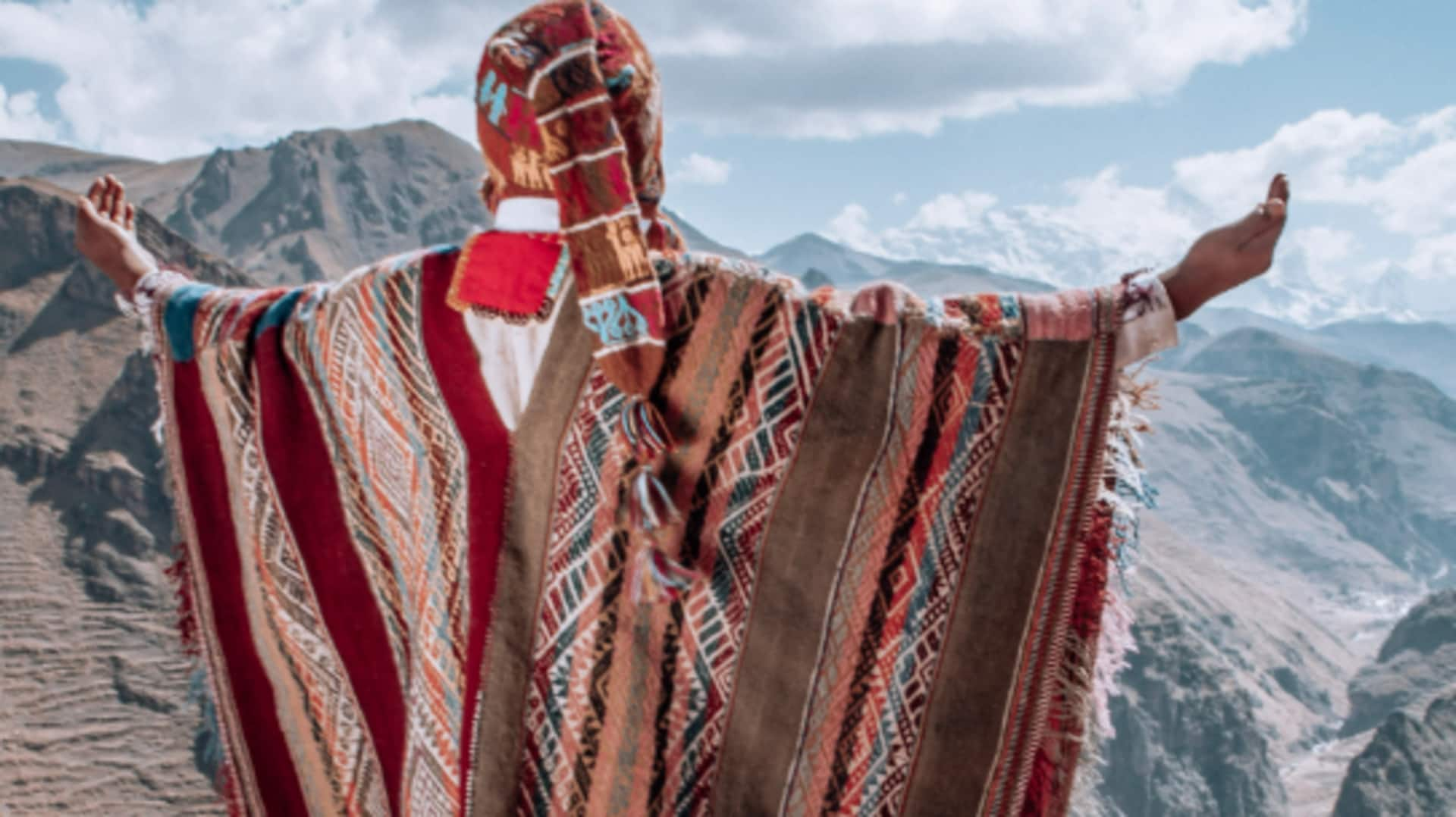
The timeless Peruvian poncho: Exploring the roots and allure
What's the story
The Peruvian poncho is more than just a garment; it's a cultural emblem woven into the history of Peru. This traditional attire, known for its simple yet elegant design, has been worn for centuries by the indigenous people of the Andes. Today, we explore the roots and allure of this iconic piece and how it continues to make a statement in modern fashion.
Origins
Historical tapestry
The Peruvian poncho, originating from the Andean highlands, has a rich history dating back to pre-Inca cultures. Initially crafted for protection against the harsh weather conditions of the mountains, these rectangular garments have significantly evolved. Today, each region in Peru showcases its unique patterns and colors through these ponchos, narrating stories of heritage and community identity that are deeply embedded in their culture.
Styling
Wearing tradition
Donning a Peruvian poncho means wrapping oneself in layers of history. For a genuine appearance, allow it to cascade freely over your shoulders, complementing it with understated attire beneath. Its adaptability shines when paired with modern elements like denim jeans or leather boots, creating a blend of tradition and contemporary style that celebrates the garment's rich cultural heritage.
Celebrations
Festive flair
In Peru, ponchos are not just garments but symbols of respect and joy during festivals and important ceremonies. These pieces are adorned with bright colors and intricate designs, each reflecting the vibrancy of joyous occasions. Choosing to wear a vibrant poncho at such events is more than a fashion statement; it's an active participation in the cultural celebration, honoring tradition and festivity.
Sustainability
Ethical threads
Sustainable fashion enthusiasts will appreciate that Peruvian ponchos are often crafted from natural fibers like alpaca or sheep wool. Supporting local artisans by purchasing these garments not only preserves traditional crafting techniques but also promotes ethical practices within the fashion industry. This approach values craftsmanship and sustainability over mass production, aligning with efforts to maintain cultural heritage and support ethical manufacturing.